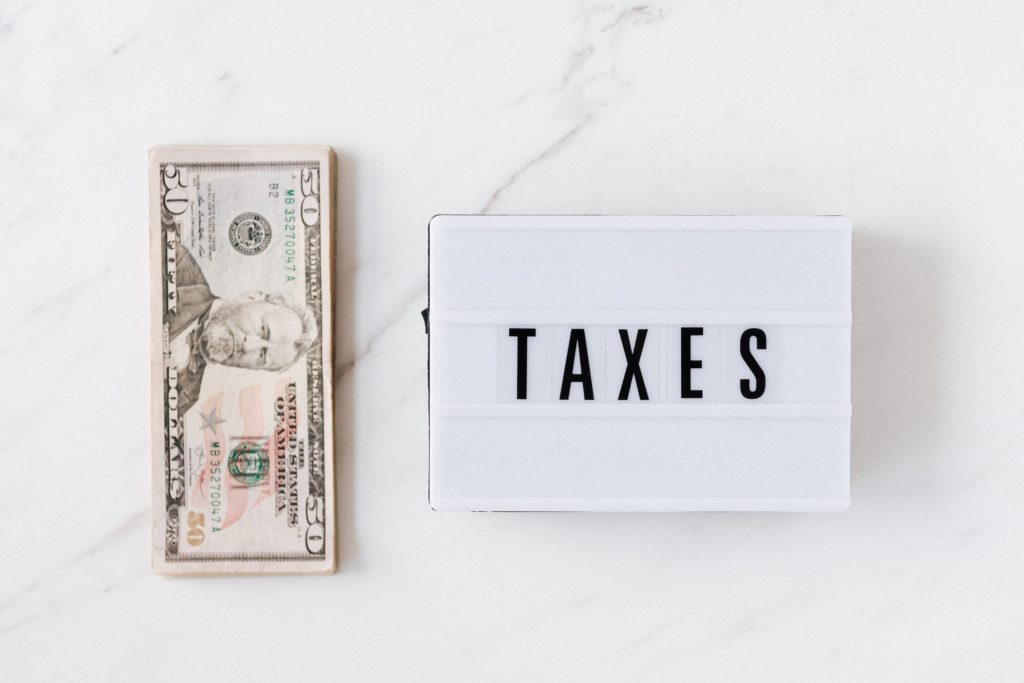
Tackle Trading recently introduced a new product that has the team all abuzz. We call it a “Trading Lab,” and it offers a suite of benefits that you can discover more about here. As the coach of Team Phoenix, fresh off the inaugural session of my lab, I wanted to share the ten guiding investment principles that I shared with my team. They reveal much about how I invest and think about markets. Furthermore, they will be topics that I will come back to repeatedly throughout our team meetings.
Some coaches show, other coaches tell. The best ones do both. I always thought the operative word in the phrase “show and tell” was the “and.” One perk to joining Team Phoenix is you get to see me show what I am often telling in these Trading Justice newsletters and elsewhere.
I chose my lab name for a very specific reason. The phoenix is an immortal bird associated with many cultures over the centuries. It’s a magical bird known for its regenerating powers. Upon dying, the phoenix is reborn from its ashes. I like to think that a phoenix evolves with each birth. It carries the lessons and scars of its previous life into the next. Setbacks are learning opportunities, mistakes a chance to progress. When one is eternal, failure need never be final.
Consider how this might apply to a trader. How many times have you had to breathe new life into your trading? How many times have you had to evolve, pivot, or otherwise shift your approach and mindset? Personally, I’ve lost count. The markets are ever-changing. Continuing to thrive requires adaptation and sometimes reinvention. So what could be a more appropriate mascot than the Phoenix?
I use the mythical bird image to help me focus on the long run and remind me that I have been reborn many times as a trader. One of my goals as the team coach is to help others evolve, to help them transition to better, smarter traders. Naturally, I focus on the strategies and tactics that I’ve found the most success with. Some will be referenced in today’s newsletter.
As a preface to the ten principles below, I must remind you that this is not investment advice. I’m sharing my preferences and what works for me. It should go without saying that my situation is unique. Take what you like, toss out the rest. Above all else, this should make you think.
Coach Tyler’s Ten Guiding Investment Principles

1. I prefer investing in tax-free or tax-deferred accounts.
2. I max out ROTH IRAs for myself and my spouse every year.
3. If I need to reduce my taxable income, I use a solo 401k.
4. I focus on what I can control, not what I can’t.
5. Capital that’s not traded is invested in a long-term, diversified stock/real estate portfolio.
6. I use covered calls and naked puts to enhance stock ownership.
7. I believe that the advance in the global stock market is permanent and that the declines are temporary.
8. I favor any technique that increases my odds of success.
9. I favor any tactic that turns volatility to my advantage.
10. I want to make timing the market as irrelevant as possible.
1. Investing in Tax-Advantaged Accounts

There are a variety of account types you can invest in. In last October’s newsletter, I wrote about most of them. You can broadly classify account types into those that have tax advantages and those that don’t. I prefer investing in tax-advantaged ones like Roth IRAs, IRAs, and 401ks for obvious reasons. When you’re investing in a margin account, you have to pay taxes on any dividends received, even if you reinvest them. That’s annoying. You also must pay taxes on any capital gains incurred every single year. Again, annoying.
With accounts that grow tax-free or tax-deferred, you don’t have to worry about taxes. At least, not until you start taking Required Minimum Distributions (RMDs). For someone in their mid-thirties like me, that also isn’t needing to pull money out of his portfolio for decades, using a taxable account is the least desirable way to go about investing.
2. Maxing out ROTH IRAs
Imagine you’re 65 and staring retirement in the face. Would you rather have $1 million in a ROTH account or $1 million in a Traditional IRA? Remember, the ROTH has already been taxed. The traditional hasn’t. Thus, Uncle Sam will want his bite as you start withdrawing money from the traditional. I hate to break it to you, but $1 million isn’t really $1 million if you have to give the government 20% to 30% of it on the way out.
Consider this one reason why I’m partial to ROTHs.
Another reason is that they’re more flexible than a traditional IRA. For example, I can pull out the principal anytime penalty-free (not that I ever would!). Try the same thing with the traditional IRA, and you’ll get hit with a 10% penalty (plus tax).
You can also open up and fund a ROTH IRA for a non-income earning spouse. This doubles the amount of money you can sock away every year if you’re married.
There are income limits to funding a ROTH IRA. It varies depending on how you file your taxes, but all is not lost for those beyond the limit. Look into the details of a backdoor Roth to see if you still might be able to use one.
3. Perks of the Solo 401k
The one tax-deferred account I use is a solo 401k. Contributions are considered pre-tax and thus reduce my taxable income today. By having tax-free and tax-deferred accounts, I can be strategic each year with where I invest my money, depending on what I need my income to be. While you can only invest $6,000 each year in an IRA ($7,000 if you’re age 50 or older), you could contribute up to $58,000 ($64,500 if you’re age 50 or older) with the solo 401k, depending on your salary.
Admittedly, not everyone qualifies for a solo 401k. They are designed for a business owner with no employees. So, if you’re a business owner with multiple employees or simply an employee getting paid w-2 income, then this won’t be available to you.
Aside from selling naked options, my broker allows me to trade every options strategy in both my ROTH and Solo 401k. So there aren’t any limitations on deploying the same systems I do in my taxable margin accounts.
4. I Focus on What I Can Control

Far too many traders obsess over things outside of their control. They give these elements undue influence over their mindset and mood. Why should my peace of mind rest on whether the market rises or falls on any given day? Why should an unexpected news event put me in a foul mood? Take my long-term investing, for instance. It is goal-focused and planning-driven, rather than being based on some attempt to outguess the economy or the markets. All successful investing involves constantly acting toward the realization of the goals, and all unsuccessful investing is based on reacting to whatever the markets happen to be doing now.
Consider the following list of things I’m in control of:
- Setting realistic goals.
- Building a plan for reaching those goals.
- Living within my means, so I have capital to invest.
- Adding money to my investment accounts every year.
- Continuing to invest regardless of market conditions.
- Maintaining a long-term focus.
- Not panicking during bear markets.
- Following my rules.
- Enhancing my trading skills to improve performance.
- Improving my mental health to be better equipped to handle the emotions of trading.
5. How I Invest Capital I Don’t Trade

I don’t trade all my money for several reasons. Diversification is one of the main ones. But that doesn’t mean capital not traded is sitting in cash. While I like having some cash on hand, hoarding too much can kill your long-term wealth building, particularly in high inflationary environments like we’re living through right now.
Money that I don’t actively trade is invested in a long-term diversified stock portfolio. I use low-cost ETFs and invest with an aggressive tilt due to my younger age, long time horizon, and risk appetite. Every year I’m adding to these accounts, regardless of market conditions. I do have a sleeve dedicated to real estate but use REITS primarily for my exposure instead of physical ownership. If you want a more in-depth overview of how this might work, read our December 2020 newsletter “How to Build an Investment Portfolio.”
6. Covered Calls and Short Puts Enhance Stock Ownership
The options market offers various ways to augment stock ownership. I’m a user and advocate of two simple strategies: covered calls and short puts. When you use them properly, they can enhance your stock ownership. And here’s what I mean by “enhance.”
-You can get paid to buy a stock you wanted to acquire anyway.
-You can increase your probability of profit.
-You can reduce your position and portfolio volatility.
In all three of these examples, you are using options to reduce risk. Unfortunately, too many people enter the options realm with a gambling mentality, viewing them as lotto tickets or slot machines. When used correctly, they are anything but. I trumpeted the virtues of covered calls in our May 2021 Newsletter “The Many Facets of a Covered Call.”
I use these strategies actively in my trading and investing accounts. Every week, I show Team Phoenix how I do it.
7. The Advance is Permanent: The Declines are Temporary

If you want to be successful as a long-term equity investor, you must buy into the idea that the global stock market, and by extension, the U.S. stock market, will continue to rise over time. Population growth, productivity increases, and inflation are three dominant forces that have driven and will continue to drive markets higher.
Perhaps the best explanation I’ve heard regarding this truth comes from Nick Murray’s book Simple Wealth, Inevitable Wealth. Forgive the lengthy quote, but it’s worth it.
“Left to its own devices, the free marketplace ultimately heals itself because the companies operating in such a system respond rationally to signals from the consumer. In adverse economic times, superior companies have the wit as well as the resources to stay the course. They can temporarily lay off workers and shutter plants to preserve cash. They have the borrowing power to invest in new plant, equipment, and technology. They have the financial flexibility and pricing power to take market share from their weaker competitors, to absorb them, and even to drive them out of business. Thus, the total value of the shares of great businesses will go down when the economy contracts. But- and this is critical- it’s never stayed down.
The natural law of a free economy – and of the value of the thriving companies which shape and are shaped by such an economy – is one of permanent advance punctuated cyclically by temporary decline. It was ever thus. A line drawn between the peaks and valleys of our economic life (and therefore of stock prices) always has a relentless upward bias. Let me say once more, because it’s this chapter’s mantra: the advance is permanent; the declines are temporary. Consult everything you know or can learn about history, and you’ll find this view borne out.”
Understanding this is critical to staying in the game every time the fearmongers in the media are screaming that the world is ending.
The following three principles are all interrelated.
8. Increasing the Odds of Success.

Perhaps this particular principle should go without saying. After all, who doesn’t want to increase their odds of success? However, when it comes to options trading, there are specific strategies that carry a higher probability of profit than others. These are the strategies most often harnessed by Team Phoenix. They include covered calls and naked puts, but also credit spreads and calendars.
As is always the case in the financial markets, you don’t get something for nothing. Unfortunately, with the increased odds of success comes a lower potential profit. I view this as an acceptable trade-off.
Another dynamic that shifts the odds in your favor is your hold time. Did you know the longer you own the stock market, the more likely you are to make money? Based on historical performance, holding the S&P 500 for a day carries about a 50% chance of turning a profit. Lengthen the hold time to one year, and it rises to 68%. At five years it 80%, and at 20 years it’s 100%.
9. Turning Volatility to My Advantage

Some people view volatility as a curse word. It’s ugly, unwelcome, and usually brings losses and pain in its wake. Fortunately, I have a system that turns volatility to our advantage. It’s known as scaling in and out. We use it on virtually every trade we do on Team Phoenix.
Scaling involves splitting your position into separate tiers to be entered at different prices. You enter some now and then wait for a better price before deploying the rest later. But it doesn’t stop there. We also scale-out at different prices. This allows us to use the natural ebb and flow of the market to our advantage. We’re taking what most view as a lemon and making lemonade.
Here’s a bold statement. Buying all at once smacks of arrogance, like tromping through a minefield with clown shoes. What, you think you know something? You don’t know where those leg-blasting, arm-stealing bombs lie! So, tread carefully. Use scaling.
At the dawn of trading, the phrase “buy low, sell high” was born. It sounds simple but oh-so-hard to implement. Blame it on your mother (or her mom – whichever you love least). She endowed you with emotions that encourage dumb decisions. As a result, you’re wired to buy high and sell low. It’s what feels good. Want to make it easier to buy low and sell high? Use scaling.
The ranks of bottom buyers and top sellers are filled with liars and lucky ducks. That’s because it can’t be done, not consistently, at least. If you did nail a turning point, you were lucky, so don’t count on a repeat because luck has a short shelf life and lacks any loyalty. Fortunately, there’s a tactic that can increase your chances of entering close to the turn. Want to give yourself two, three, or four opportunities to game a reversal? Use scaling.
10. Make Market Timing Irrelevant

The hardest part of active trading is arguably timing the market. If your trading approach requires you to forecast market movements with precision, then you’re going to struggle. It’s more complicated than it looks. For this reason, I favor any strategy or tactic that renders market timing irrelevant – or at least less relevant.
The more times you buy and the longer your hold time, the less market timing matters. In Team Phoenix, we embrace both of these.
If you’d like to look over my shoulder to see how these ten principles guide my trading and investments, come join me and Team Phoenix.
Legal Disclaimer
Trading Justice LLC (“Trading Justice”) is providing this website and any related materials, including newsletters, blog posts, videos, social media postings and any other communications (collectively, the “Materials”) on an “as-is” basis. This means that although Trading Justice strives to make the information accurate, thorough and current, neither Trading Justice nor the author(s) of the Materials or the moderators guarantee or warrant the Materials or accept liability for any damage, loss or expense arising from the use of the Materials, whether based in tort, contract, or otherwise. Tackle Trading is providing the Materials for educational purposes only. We are not providing legal, accounting, or financial advisory services, and this is not a solicitation or recommendation to buy or sell any stocks, options, or other financial instruments or investments. Examples that address specific assets, stocks, options or other financial instrument transactions are for illustrative purposes only and are not intended to represent specific trades or transactions that we have conducted. In fact, for the purpose of illustration, we may use examples that are different from or contrary to transactions we have conducted or positions we hold. Furthermore, this website and any information or training herein are not intended as a solicitation for any future relationship, business or otherwise, between the users and the moderators. No express or implied warranties are being made with respect to these services and products. By using the Materials, each user agrees to indemnify and hold Trading Justice harmless from all losses, expenses, and costs, including reasonable attorneys’ fees, arising out of or resulting from user’s use of the Materials. In no event shall Tackle Trading or the author(s) or moderators be liable for any direct, special, consequential or incidental damages arising out of or related to the Materials. If this limitation on damages is not enforceable in some states, the total amount of Trading Justice’s liability to the user or others shall not exceed the amount paid by the user for such Materials.
All investing and trading in the securities market involve a high degree of risk. Any decisions to place trades in the financial markets, including trading in stocks, options or other financial instruments, is a personal decision that should only be made after conducting thorough independent research, including a personal risk and financial assessment, and prior consultation with the user’s investment, legal, tax, and accounting advisers, to determine whether such trading or investment is appropriate for that user.

 David Otis
David Otis
July 20, 2021 at 7:37 PMI loved this. These are excellent thought provoking principles that any trader, and especially someone new like me enjoy thinking about. Thanks for the newsletter and the podcast on such an important subject.